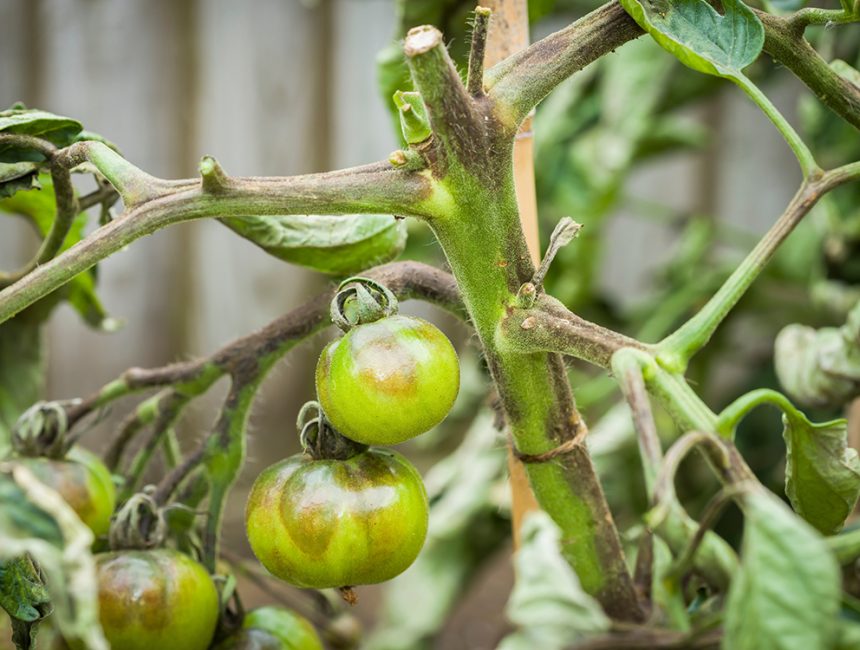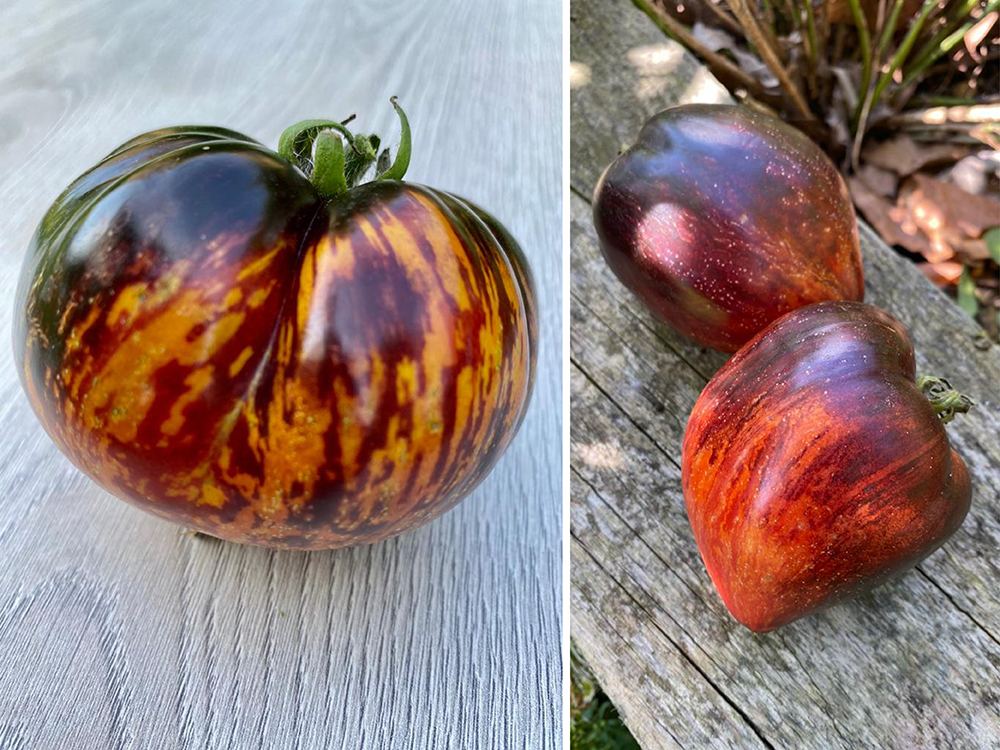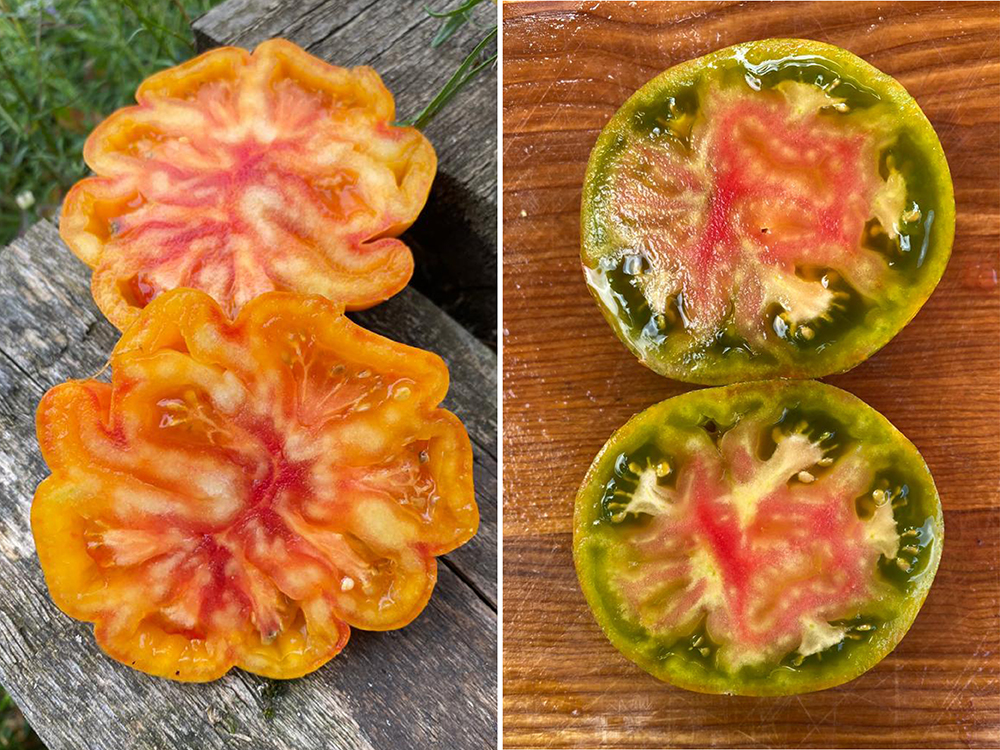

It came, it spore, it conquered. So it goes with blight. Often the first thing you know about this symptom of a microscopic fungus or bacteria is the death of your precious plant matter. Precisely what strain it was and how and when it entered your growing environment is usually one for the post-mortem. Unlike other plant-felling threats it’s entry and early stages are hard to track, making prevention your best means of combatting it.
Fortunately we at AutoPot have some excellent growers out there who can offer plenty of perspective and tips on such problems. Recently we were wrapping up a review of the ’23 growing season with Lance Turner of Tomato Revolution. It was then that the pomodori signori alighted upon the subject of blight, how blight has caught his attention, and how best to keep it at bay.

Firstly, why is blight blipping on Lance’s radar at the moment? Blight has been around forever and, as it is caused by fungal or bacterial organisms, it’s safe to assume blight will be around forever more. But in Lance’s opinion, and that of a good many other growers, recent, milder year-round conditions (including wetter, more humid summers) have made its intrusions more and more noticeable.

True, blight isn’t particularly an issue for Lance as a seed grower. As he says, ‘seeds from blighted plants do not carry blight when saved.’ But his observations and ideas can serve as invaluable guide for growers of all stripes, many of whom will be growing to crop.
For starters, it’s important to realise that blight is not a disease in itself. Instead it’s a symptom of attack by a vast range of airborne pathogens. Hence figuring out exactly what’s causing your particular blight can be tricky. Fortunately, most kinds of blight are exacerbated by the same conditions regardless of the strain involved. This means basic preventative steps are pretty much universally applicable, whatever the cause.

Plant Positioning
Simply spacing your plants slightly further apart helps reduce humidity and improve airflow, denying blight-causing spores their favoured conditions. On a bigger scale, Lance has referred in the past to orientation of plants and ventilating with one eye on the prevailing weather. ‘Late June to late July is when blight can be at its worst…I would consider reducing ventilation on a given wet and windy day in July even if was for a couple of hours. It could be the difference between being ravaged by or escaping blight.
Happily, Lance has found that AutoPot have much to offer in this respect. Modules can be spaced apart with ease and moved at will, allowing growers to maximise the efficiency of light sources with young plants before increasing spacing as they mature. Repositioning and, if necessary, the removal of modules, can be done with minimal disruption to the running of the system.

Pruning
Cutting a plant is very much like cutting yourself, it allows infection a way in. For this reason Lance favours judicious pruning. ‘When we do prune, we only choose a time when there are a few dry days ahead. We avoid pruning when conditions are humid or wet. After a pruning session we always mist the wounds with a diluted liquid seaweed solution. This acts as a medicine and speeds up the healing of the wound.’ Whilst Lance’s specific area of expertise is tomatoes this is sound advice just about any plant variety, whether grown indoor, semi-indoor, or outdoor.

Irrigation
As Lance says, ‘blight spores need water to thrive.’ Therefore if you can deny them access to water you’ll go a long way towards limiting their impact. Leaves that are constantly wet are going to be prone to blight. Open garden trays and any pools of standing or accessible water are a very happy breeding ground for spores so keep your space clean, tidy and your surfaces dry.
Lance’s AutoPot modules have shown several advantages over other methods of irrigation in helping to restrict the spores access to water. Plants in AutoPot modules are irrigated and fed from below via the module tray so your leaves aren’t left wet and the top layer of the grow media in the pot is dry. The module trays themselves are lidded, meaning that the water and nutrient solution therein is hidden away from spores. Best of all the AQUAvalve in each tray only opens to allow a fill once the previous fill has been used up, meaning there is no standing water to speak of.

Humidity
Overly humid growing environments are favourable to blight so it’s important to keep tabs on your levels. Ideally, relative humidity should be around 50-70% at most depending on the variety being grown. Certainly you can dehumidify to get your levels right but it’s better still to eliminate the causes of excess humidity.
Your choice of watering system or regime can help in this respect too. ‘Top-feeding’ irrigation (ie. drippers or hand watering) wets the upper layers of grow media in the pot. This moisture is then prone to evaporation which contributes to humidity. By feeding from below AutoPot neatly sidesteps this problem. As Sakata’s UK Seed Breeder Rory Blackbourn recently testified. ‘With AutoPot, as each plant self-regulates what water it needs, there is no overwatering by hand or drippers and no excess water on the floor, reducing the humidity of the overall growing space’.

Tomato Revolution
Development of new varieties for seed is giving Lance an invaluable opportunity to observe and explore plant behaviour year on year. It has also allowed him to attain some much-coveted accreditation. ‘We’ve been inspected, our plants have been tested for diseases, and we have a clean bill of health. We have also now got a license to market seed from DEFRA.’
Creating seeds is not just about studious growing though, there are some truly exciting end products just around the corner, as Lance explains. ‘Our focus for 2023 is to continue to grow some of the most unique tomatoes on the planet. We are launching six brand new Dwarf varieties in September for the Dwarf Tomato Project. Elsewhere, many of our crossing projects are in their fourth year and we are starting to see stability. We may launch our first own new variety in 2024.’
With so much expertise in the locker Tomato Revolution’s after-sales and growing advice are well worth accessing. Fortunately such info is readily available.

Ever-ready to assist, Lance sees product support via social media as a two-way street. Growers get excellent guidance and Lance gets bearings with which he can navigate onward seed development. ‘We receive daily questions from customers on social media asking for tomato growing advice. Engagement with our customers is important as it also gives an insight to the growing season nationally and how are tomatoes are performing across the UK.’ Want to grow one-of-a-kind tomatoes and be part of something bigger – get involved now @tomato_revolution.
| Monday | 9AM-5PM |
| Tuesday | 9AM-5PM |
| Wednesday | 9AM-5PM |
| Thursday | 9AM-5PM |
| Friday | 9AM-5PM |
| Saturday | Closed |
| Sunday | Closed |